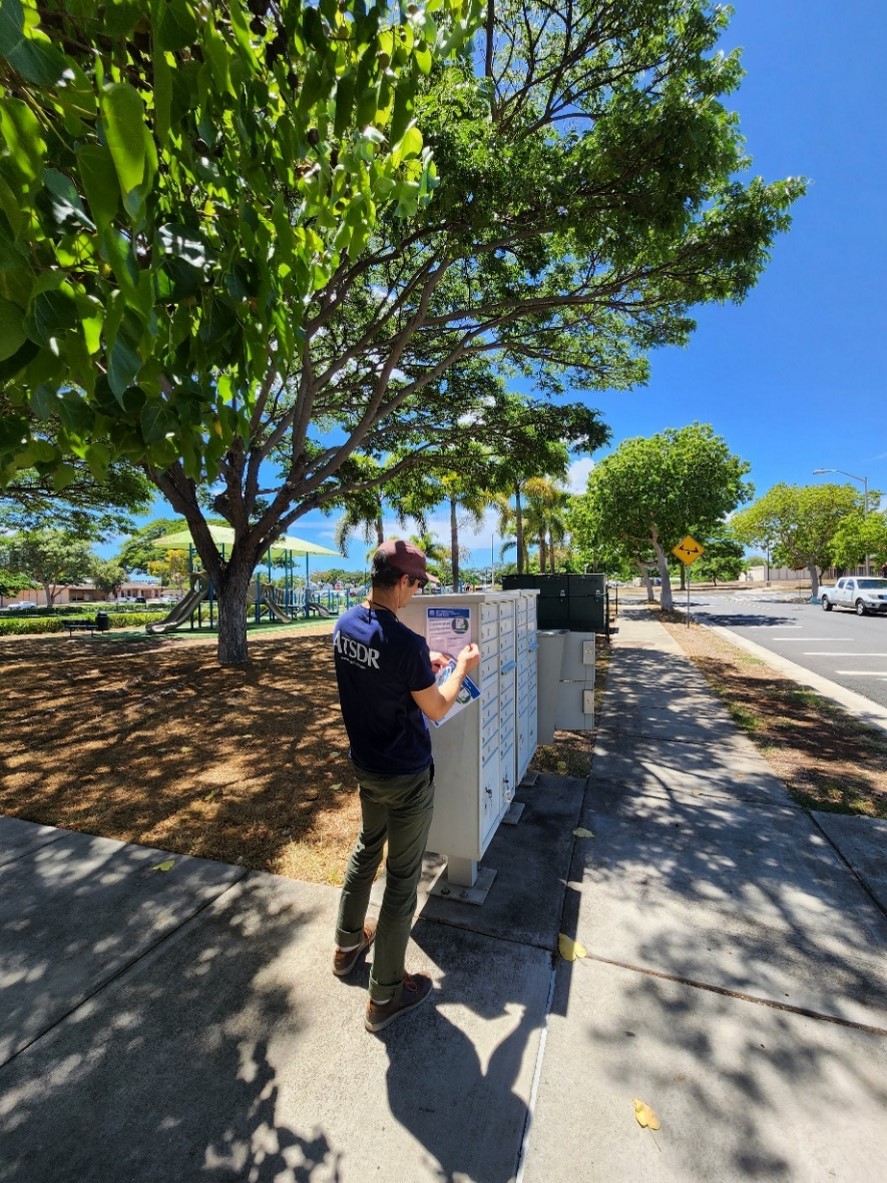Red Hill Response: Second ACE Investigation
Red Hill Response — Second ACE Investigation
From December 2021 to March 2022, the Joint Base Pearl Harbor-Hickam water distribution system was systematically flushed and tested by zone.

An ACE investigation team member posts flyers on community mailboxes to inform and encourage community participation in the second (follow-up) ACE survey. Image source: Photo taken by ATSDR. All people in photo are CDC/ATSDR staff.
Approximately six months after the last drinking water advisory was lifted, the Hawaii Department of Health (HDOH) requested that CDC/ATSDR conduct a follow-up ACE investigation. From August to September 2022, CDC/ATSDR assessed ongoing community concerns and health effects. Eligible participants included anyone present in the affected area during the exposure period of November 20, 2021–March 18, 2022.
For this ACE, the team assisted HDOH by
- designing a survey using the ACE Toolkit for data collection,
- capturing additional information including the experiences of pregnant and breastfeeding women,
- developing a data management plan,
- collecting data through electronic self-administered surveys,
- analyzing survey results, and
- recommending next steps.
Key Findings
986 people from 785 of the approximately 9,700 households in the affected area participated in the follow-up survey. Over half (56%) of these participants also completed the initial ACE survey.
Eighty percent of the respondents self-reported experiencing one or more symptoms in the past 30 days; 60% reported experiencing 3 or more symptoms. The most frequently reported health symptoms were headaches, anxiety, and dry or itchy skin. Over half of respondents reported worse physical health or mental health after the incident.
Recommendations
Based on the 2nd ACE investigation’s findings, the ACE team made recommendations to HDOH:
- Continue to rebuild communities’ confidence in the drinking water system by strengthening communication across agencies and with the public.
- Provide support to clinical providers to help them better identify, assess, treat, and document affected individuals.
- Provide more support for identifying and mitigating psychosocial stressors.
- Ensure equity in the response across the affected populations.
- Facilitate further health and environmental impacts investigations. These could include long-term health monitoring and activities such as an ATSDR public health assessment to better understand longer-term health risks.
Second ACE investigation results are pending publication.